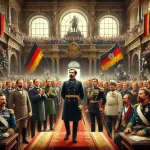When the Unification of Italy Begins
- The initial process of Unification started with the Congress of Vienna in 1815.
Factors Led to Unification
- Geographical Factors
- The geographical unity of the Italian peninsula was a natural factor that played a significant role in the unification process.
- The close proximity and interconnectedness of the Italian states facilitated trade, communication, and cultural exchange.
- Renaissance and Role of Thinkers/Philosophers
- The Italian Renaissance, with its emphasis on humanism and the revival of classical knowledge, played a crucial role in fostering a sense of Italian identity.
- Thinkers and philosophers like Niccolò Machiavelli and Giuseppe Mazzini advocated for the unification of Italy and inspired the masses with their writings and ideas.
- Trade and Economy
- Efforts were made to establish customs unions and remove trade barriers among the Italian states. These initiatives aimed to promote economic cooperation and create a unified Italian market.
- Uprisings and Wars
- The oppressive rule of foreign powers, such as the Spanish Habsburgs and the Austrians, fueled the nationalist sentiments among the Italian population.
- The French Revolution and the subsequent Napoleonic Wars further contributed to the aspiration for a unified Italy.
- Strong Leadership
- Giuseppe Garibaldi, with his Redshirts, fought for the liberation of the southern Italian states.
- Count Camillo di Cavour, a skilled statesman, orchestrated diplomatic maneuvers and alliances to achieve the goal of Italian unification.
Result
- The formation of the modern Italian state began in 1861 with the unification of most of the peninsula under the House of Savoy (Piedmont-Sardinia) into the Kingdom of Italy.
- Italy incorporated Venetia and the former Papal States (including Rome) by 1871 following the Franco-Prussian War (1870-71).


